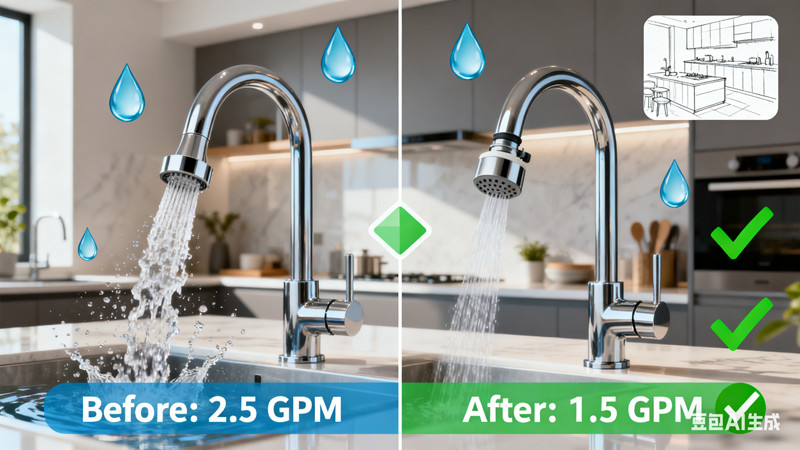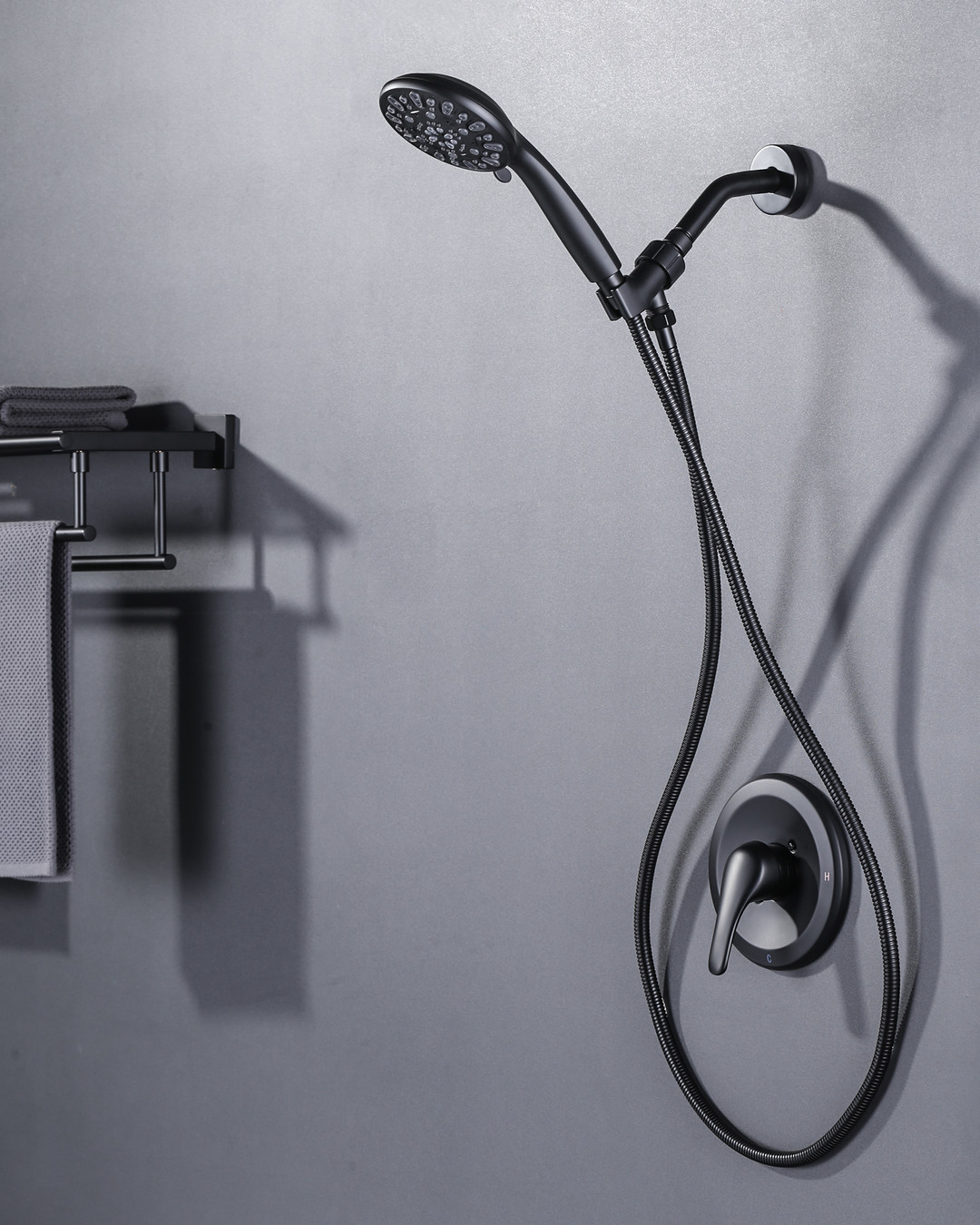In today’s world, water conservation is no longer just an environmental concern—it’s a household priority. The kitchen is one of the busiest areas in any home, and it’s also where a surprising amount of water is wasted every day. From washing dishes to rinsing produce and running appliances, gallons of water can slip down the drain without much thought. But here’s the good news: you can significantly reduce your kitchen’s water usage without sacrificing performance or pressure. Let’s explore how.
1. Choose a Water-Saving Faucet with Aerators
One of the easiest and most effective ways to save water in the kitchen is to install a low-flow faucet with an aerator. An aerator mixes air with the water flow, maintaining pressure while reducing the total volume of water that comes out.
Modern aerators can cut water use by up to 30–50% without making the stream feel weak. For example, a traditional faucet might use 2.2 gallons per minute (GPM), while a water-efficient model flows at just 1.5 GPM—yet feels just as powerful.
Tip: Look for faucets labeled WaterSense-certified, as they meet strict efficiency standards set by the U.S. Environmental Protection Agency (EPA). These faucets are designed to balance comfort, flow rate, and water savings perfectly.
2. Check and Maintain Your Water Pressure
Sometimes people think they’re losing water pressure when, in reality, it’s just poor faucet maintenance. Mineral buildup from hard water can clog aerators or restrict flow. Cleaning your faucet’s screen or replacing it every few months can restore ideal pressure and flow efficiency.
If you notice a sudden drop in water pressure, inspect the supply valves under your sink. They might be partially closed or clogged. Regular maintenance ensures your faucet runs at peak efficiency while keeping your water bills low.
3. Upgrade to a Smart or Touchless Faucet
Smart faucets are becoming popular for good reason—they conserve water without requiring extra effort. These high-tech fixtures use infrared sensors to detect hand motion, turning on only when needed.
Imagine rinsing your hands or washing vegetables: the water flows only when your hands are under the faucet and stops the moment you move away. Over time, that simple automation can save hundreds of gallons of water per year.
Touchless faucets also help reduce cross-contamination and improve hygiene in the kitchen—especially useful when handling raw meat or oily ingredients.
4. Rethink Dishwashing Habits
Dishwashing habits have a massive impact on water consumption. Many people leave the tap running while scrubbing dishes, which wastes several gallons per minute. Instead:
- Use a basin or bowl to soak and rinse dishes.
- Scrape food scraps instead of rinsing before placing them in the dishwasher.
- Run full loads only when using a dishwasher—each cycle uses the same amount of water whether half-full or packed.
Modern dishwashers are surprisingly efficient, often using less water than handwashing when operated properly. If your appliance is over 10 years old, consider upgrading to an Energy Star-rated dishwasher, which can save up to 3,500 gallons of water annually.
5. Fix Leaks Immediately
A dripping faucet might seem harmless, but even a small leak can waste over 2,000 gallons per year. Most leaks are caused by worn-out washers or loose connections and can be repaired easily with basic tools.
Here’s a quick test:
- Turn off all water sources in your home.
- Check your water meter.
- Wait an hour without using any water.
If the meter reading changes, you likely have a leak. Addressing it immediately not only conserves water but also prevents long-term damage to plumbing fixtures and cabinets.
6. Use the Right Sink Accessories
Small accessories can make a big difference in your water usage:
- Sink sprayers or multi-function pull-down faucets help target rinsing, so you use less water per task.
- Flow restrictors can be installed inside the faucet to regulate output without lowering pressure.
- Foot pedals allow you to control water flow hands-free—perfect for multitasking while cooking.
These tools give you more control over when and how much water you use, cutting down on unnecessary flow.
7. Optimize Cooking and Food Preparation
Cooking often requires a lot of rinsing, washing, and boiling—but you can streamline those steps to save water:
- When rinsing fruits and vegetables, use a bowl instead of running water continuously. You can reuse the leftover rinse water to hydrate houseplants.
- Steam instead of boil when possible—steaming uses less water and retains more nutrients.
- If you do boil, reuse the water for soups or for cooling hot pots and pans later.
- Avoid thawing frozen food under running water; plan ahead and let it defrost in the fridge overnight instead.
Small shifts in kitchen habits add up quickly—especially for large households.
8. Monitor Your Water Usage
Tracking your consumption can motivate change. Many households now use smart water monitors, which attach to your plumbing system and provide real-time insights through a smartphone app.
These devices can identify leaks, measure usage per faucet, and even alert you if water flow exceeds normal levels. When you see data on how much water you’re actually using, it’s easier to adjust behaviors accordingly.
9. Choose Efficient Appliances
Your faucet isn’t the only source of water waste in the kitchen. Refrigerators with built-in water dispensers, ice makers, and dishwashers all contribute to overall consumption.
When purchasing new appliances, look for Energy Star labels and check the “gallons per cycle” rating. These models are engineered for minimal water use without compromising performance.
10. Cultivate Water-Conscious Habits
Technology can help, but lasting savings come from consistent habits. Here are a few to practice daily:
- Turn off the tap while scrubbing dishes or washing hands.
- Rinse produce in batches instead of individually.
- Collect running water while waiting for it to heat up—use it for watering plants or cleaning.
- Encourage family members to be mindful of water use, especially children.
When every household member adopts water-saving behaviors, the impact multiplies significantly.
Final Thoughts
Saving water in the kitchen doesn’t mean giving up convenience or pressure. With modern fixtures, smart appliances, and thoughtful habits, you can maintain a strong, satisfying water flow while drastically reducing waste.
Start small—install a faucet aerator, fix leaks, or use a rinse basin. Then, gradually adopt more efficient appliances and accessories. Every drop counts, and over time, these changes lead to a more sustainable kitchen and a lower water bill.
In the end, water conservation isn’t about restriction—it’s about efficiency, awareness, and smart design. By balancing performance and sustainability, you’ll create a kitchen that works beautifully for you and responsibly for the planet.
 WEWE Kitchen Faucets
WEWE Kitchen Faucets


您好!please sign in